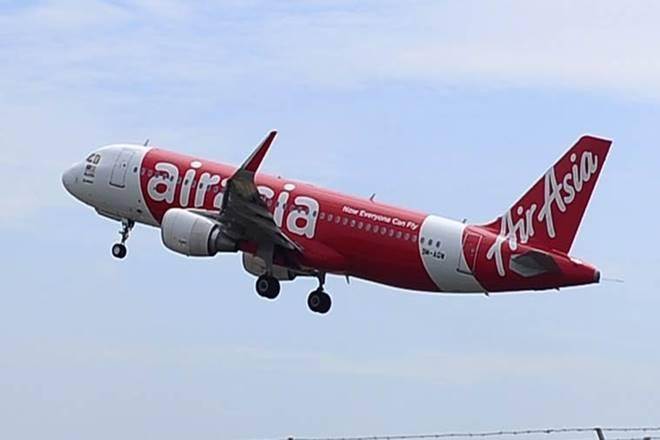Losses are mounting at the airline firms of the Tata Group – AirAsia India and Vistara. While Vistara’s losses in financial year 2018-19 nearly doubled to Rs 830 crore compared to the previous year, AirAsia’s losses quadrupled to over `670 crore in the same period. Tata Sons holds 51% stake in both airlines. Both have incurred losses through the past four financial years.
In FY19, AirAsia’s other expenses saw a 70% y-o-y increase to Rs 2,830.62 crore. The airline’s liabilities went up 84% y-o-y to Rs 1,537.07 crore during the year, on account of its trade payable more than doubling to `827.8 crore. The airline saw a net decrease in cash and cash equivalents of Rs 103.67 crore in FY19 against a net increase of Rs 93.47 crore in FY18.
The Tata Group infused over Rs 307 crore capital into AirAsia in FY19, according to data sourced from the ministry of corporate affairs (MCA). Tata Sons also bought 2% stake from two other shareholders, taking the company’s total holding in the airline to 51% in FY19.
The company’s auditors last year had also expressed “material uncertainty about the company’s ability to continue as a going concern,” according to financials filed by the company with the MCA.
Vistara’s losses in FY19 were primarily on account of 48.3% y-o-y increase in other expenses to Rs 3,436.31 crore. The airline’s finance costs more than doubled y-o-y to Rs 19.01 crore. The full-service carrier’s liabilities rose 41.5% y-o-y to Rs 1,123.96 crore, of which trade payables consisted of `302.73 crore, up 50% y-o-y.
The net increase in cash and cash equivalents during FY19 stood at `204.63 crore, down 23.4% y-o-y. Total capital infusion into Vistara during FY19 stood at Rs 2,200 crore, of which Tata Sons, along with nominees, infused `1,122 crore.
One of the challenges for Vistara, a joint venture between the Tata Group and Singapore Airlines, is that the full-service model has been a challenge, said analysts.
“The full-service model is something which has not really worked out very well in the Indian context. Jet Airways failed miserably. Air India, which is also a full-service carrier, continues to be under huge stress. In full-service carriers, the cost structure is very high; so invariably you see them struggling compared with low-cost carriers. That’s another reason why losses have continued for Vistara,” an analyst from a domestic brokerage said.
However, Leslie Thng, CEO, Vistara, said the company remains committed to the full-service model. “We strongly believe that there is a large segment of customers spread across India that values the full-service flying experience, and this segment of customers continues to grow as India progresses to become a stronger economy… With rising disposable incomes… there are so many segments of travellers in the country with varied preferences and spending capacity that diverse business models can easily co-exist. The one-size-fits-all approach cannot work in India, and that’s why opportunities for everyone only multiply,” Thng told FE.
The previous financial year was tough for most domestic carriers as yields were under pressure due to over-capacity and lower fares. Aviation turbine fuel (ATF) prices were 23% higher y-o-y in FY19, while the Indian rupee had depreciated 8.4% against the US dollar, which increased the operating costs for domestic carriers. However, industry observers believe that Vistara and AirAsia had additional factors working to their disadvantage, which compounded losses.
AirAsia has faced additional price pressures because it operates on some routes, like Bangalore-Surat, Hyderabad-Bhubaneshwar, which offer thinner loads and lower pricing.
“AirAsia has always flown some of the odd sectors where the pricing has remained weak because these sectors are not very high in terms of loads that they can offer. It is not a very lucrative market by volume. So, they have seen the losses mount and AirAsia continued to see the pressure on pricing,” the analyst said. AirAsia did not respond to FE’s queries.
However, with the grounding of Jet Airways, AirAsia has secured additional slots in Mumbai and Delhi, which may marginally improve its top line though it may continue to post losses for some time, analysts said. AirAsia’s domestic passengers carried between January and October increased 30.5% y-o-y, according to data collated by the Directorate General of Civil Aviation (DGCA).

Vistara has also significantly benefited from the grounding of Jet Airways. The airline saw a 34.8% y-o-y rise in domestic passengers carried till October. In comparison, IndiGo, the largest Indian carrier by domestic market share, saw an 18% y-o-y increase in passengers carried between January and October.
Thng told FE that the company will continue with expansion plans. “In this financial year, we have significantly grown our domestic network by adding a slew of destinations and multiplying frequency on key routes such as Delhi-Mumbai, while foraying in the international market. We entered strategic codeshare partnerships with global carriers like United Airlines and Japan Airlines, while also expanding the scope of existing agreement with Singapore Airlines and SilkAir to provide an extended international network to our customers. Our fleet has increased by over 50% so far and the size will have almost doubled by the end of this financial year. All of it reflects our commitment to growing Vistara in scale and size, which is our top priority,” Thng said.
